Oculus VR Reveals Retail Price of Its Virtual Reality Headset: $599
by Anton Shilov on January 7, 2016 1:03 AM EST- Posted in
- VR
- GPUs
- Oculus Rift
- CES 2016
- Oculus

Oculus VR on Wednesday revealed the price of its Oculus Rift virtual reality headset as well as its launch date. The price of the VR hardware appears to be considerably higher than expected by gamers and industry analyst. The developer claims that the high price is conditioned by high costs and the use of custom hardware. However, such price point may slowdown adoption of virtual reality technologies by the masses.
The Oculus Rift bundle includes the VR headset, an Xbox One gamepad, a sensor, the Oculus Remote controller as well as EVE: Valkyrie and Lucky's Tale VR games. The initial bundle will not include the Oculus Touch controllers, which were recently delayed to the second half of the year. The Oculus Rift virtual reality headset is available for pre-order for $599 on the company’s web-site and will ship starting March 28, 2016, to 20 countries. Select retailers will also sell Oculus Rift hardware in April. In addition, makers of gaming PCs plan to offer Oculus Ready PCs with the headset next month starting at $1499.
Back in early October, 2015, Palmer Luckey, the founder of Oculus VR, said in an interview that the price of one Oculus Rift headset was in the “$350 ballpark”, but it was “going to cost more than that”. As it appears, the virtual reality head mounted display (HMD) costs nearly two times more than that. The $599 price-point is a yet another indicator that the first-generation VR headsets are expensive to make in general. However, that price is too high for the mass market and for many gamers, believes Jon Peddie, the head of Jon Peddie Research, which tracks sales of graphics adapters and PC gaming hardware.
A Lot of Custom Hardware
While the virtual reality HMD is available for pre-order now, Oculus VR still has to confirm its final technical specifications. Based on what the company revealed about six months ago, the Oculus Rift uses two custom AMOLED panels (one per eye) with 2160×1200 resolution and 90 Hz refresh rate (1080×1200 per eye). The AMOLED displays were architected for low persistence, they display each image for about 2 ms in a bid to minimize delays and avoid effects like motion blur, which can cause nausea. The headset also features specially designed adjustable lenses to enable wide field of view. Each headset has integrated headphones and a microphone. Besides, the Oculus Rift sports various sensors, including the company’s own Constellation system based on infrared sensors, which tracks position of the user’s head.
To connect to a PC, the Oculus Rift and devices that accompany it (gamepad, sensor, remote, etc.) use one HDMI 1.3/HDMI 1.4 interconnection, three USB 3.0 interconnections and one USB 2.0 interconnection.
The Oculus Rift virtual reality headset uses a lot of custom components that were designed specifically for this device. For example, the low-persistence AMOLED display panels were co-developed by Oculus and Samsung Electronics. Oculus VR claims that they wanted to make a device that will offer the best virtual reality experience possible today, which is why they tried to avoid any trade-offs or compromises. Due to extensive usage of parts that are not mass-produced today, the cost of each Oculus Rift should be rather high, which is one of the reasons why the headset is priced at $599.
High-End PC Needed
Since the Oculus Rift should run games in 2160×1200 resolution at 90 Hz with minimal latency, it requires a rather powerful personal computer to offer comfortable experience. Oculus VR recommends a PC with a quad-core Intel Core i5-4590 microprocessor (or equivalent), an AMD Radeon R9 290 or NVIDIA GeForce GTX 970 graphics adapter (or equivalent) as well as 8GB of RAM. The company admits that the more powerful your system is, the better experience with Oculus Rift you are going to get.
Developers of graphics processing units have implied multiple times that for the best VR experience a dual-GPU graphics sub-system is required today. For example, AMD plans to align release of its new dual-chip Fiji video card with availability of VR headsets in the second quarter. In a dual-GPU graphics sub-system, each graphics chip renders its own part of the scene for one eye. Such approach doubles performance and lowers latency. However, two GPUs also require a more powerful central processing unit as well as a high-end power supply unit.
For makers of computer hardware the launch of the first VR headset for gamers means a chance to improve sales of their higher-end products. Not only manufacturers of video cards or microprocessors can benefit from availability of the Oculus Rift, but also producers of RAM, solid-state drives and motherboards can take advantage of the headset as enthusiasts begin to build their new systems. Unfortunately, significant investments in hardware may slowdown adoption of virtual reality HMDs by both gamers and the general public.
Oculus VR: 100+ Virtual Reality Games to Be Available in 2016
Oculus VR claims that more than 100 games designed for virtual reality and compatible with the Rift are set to be available by the end of 2016, including “dozens of full-length AAA” games. The company does not reveal a lot of names, but in addition to the titles bundled with the VR headset, the firm mentions Rockband VR by Harmonix, Edge of Nowhere by Insomniac, and The Climb by Crytek.
While over a hundred of titles that support VR is a lot, only a handful of them will actually attract users to the platform. Since $599 is a significant investment for many gamers, there should be several compelling titles, which not only demonstrate the technology itself, but make people want to play.
A Lot of Excitement
There is a lot of excitement about virtual reality technologies not only among gamers, but also among developers of hardware and software. While the technology itself has a lot of potential for video games and beyond, the very first Oculus Rift headset is designed primarily for games. The price of the HMD is high for many gamers, but for general users it is prohibitively expensive. Therefore, sales of the device will likely be rather limited. In fact, even Facebook, the owner of Oculus VR, does not expect to sell a lot of VR headsets this year.
Sales enthusiast-class graphics cards, which cost $399 and higher, total approximately three million units a year, according to Jon Peddie Research. There are many PC gamers nowadays, but only a fraction of them invests thousands of dollars in hardware. Various analysts make different predictions about sales of the first-generation VR gear, some are optimistic and some are pessimistic. For example, according to a report released by Juniper Research several months ago, cumulative sales of VR headsets in their first year of availability (i.e., 2016) will be approximately three million units. There are three major VR devices to be released this year: the Oculus Rift, the Vive from HTC and the PlayStation VR from Sony. It is highly likely that the majority of hardcore enthusiast gamers will buy only one of them. Juniper predicted that cumulative sales of VR headsets will hit around 30 million units by 2020 as hardware and software evolves.
It remains to be seen how many virtual reality head-mounted displays Oculus VR will sell this year. Palmer Luckey said in an interview that the first consumer version of the Oculus Rift was developed to offer great experience and to show potential of the technology to the world. Hopefully, it will deliver to the promise.


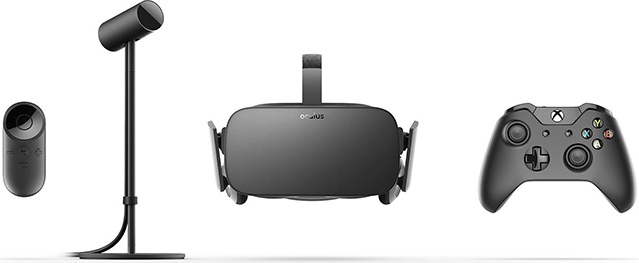
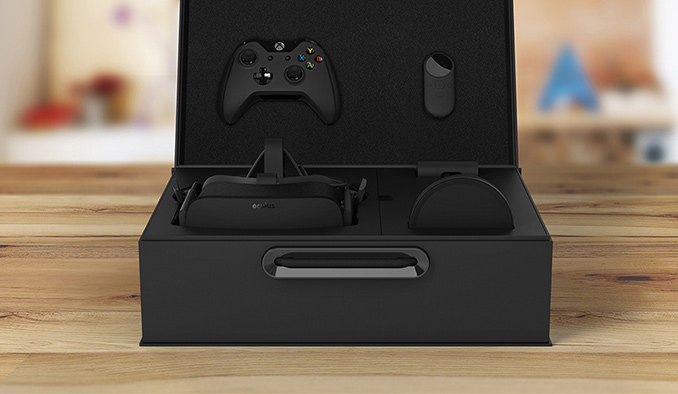
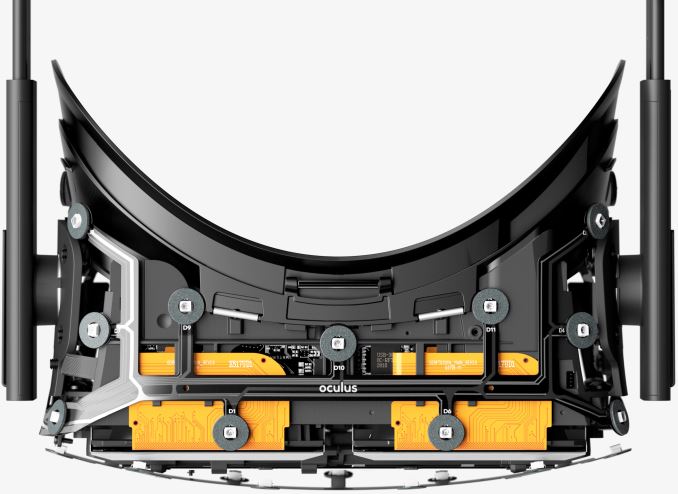
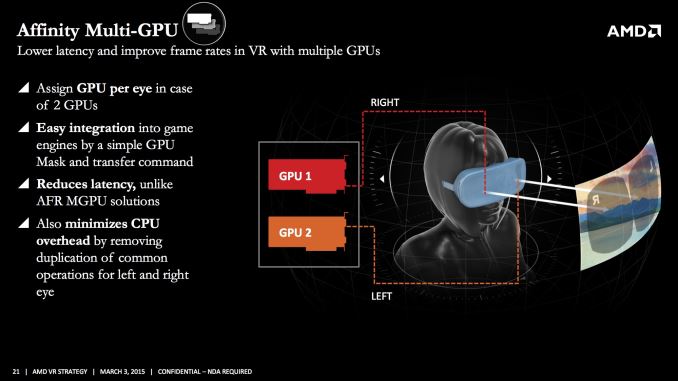


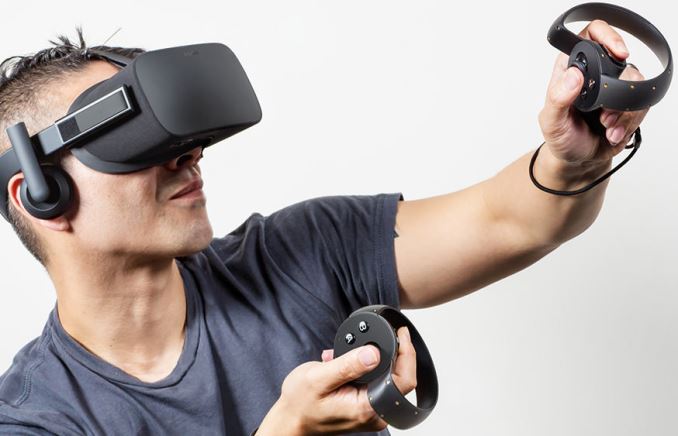








75 Comments
View All Comments
prisonerX - Thursday, January 7, 2016 - link
Epilepsy? Why worry about that when this device will give the majority of people nausea and headaches after limited use.Murloc - Thursday, January 7, 2016 - link
do you really need to use glasses with this, it being in your face and everything?It may come down to the lenses that they use.
HollyDOL - Friday, January 8, 2016 - link
Generic lens can only compensate "flat issues", if you have some cylinders in one of your eyes for example, you need specific glasses (or contact lens) - most likely customized to align the correction properly against your eye and glass frame.sotti - Thursday, January 7, 2016 - link
The fact that Palmer set the expectation of in the ballpark of $350 many who were closely following the product expected something north of that, but a ballpark could possibly described as maybe +-30%.While the price of $600 isn't really that bad, it's >70% increase from the $350 ballpark. That kind of shock for people who were perparing to plunk down in the $400-450 range is sticker shock. Just go talk to nvidia about the ratio of GTX 970s to 980s.
Kepe - Thursday, January 7, 2016 - link
So, they'll be giving these for free for those who backed their kickstarter and everyone else will get to pay for those free units. Nope. Keep your goggles, Oculus. If HTC can undercut Oculus' price by 150-200 dollars with their Vive, Oculus is dead. I'm going to spend ~700 dollars on a new GPU this year, I am not going to spend another 600 dollars on VR goggles. 400 USD/EUR would've been an acceptable price. 600 is just a rip-off.Murloc - Thursday, January 7, 2016 - link
both oculus and HTC still have to deliver on performance and game support regardless of price so talking about price differences is useless at this point.I thought spending 600$ on a phone was stupid 10 years ago and I still do, yet in the meanwhile the iphone has 44% marketshare in the US.
Cheaper doesn't always win.
BrokenCrayons - Friday, January 8, 2016 - link
I don't think it's entirely fair to compare phones to the Oculus. Phones are firstly subsidized by the carrier and the subscriber usually (unless in the case of a no contract phone) absorbs that cost slowly over the duration of their contract. Secondly, mobile phones were already very commonplace 10 years ago and they were even then considered almost a necessity for most people (now much moreso than then, but still, a lot of people thought of their mobile as a vital piece of technology for everyday life). Lastly...why not, three is the magic number :)...a phone makes many other devices redundant, filling in many common gaps in a person's life for communications services, navigation, photography and so forth. The Oculus isn't subsidized or viewed as a necessity by the general public. It certainly doesn't replace any existing devices or merge the functionality of several preexisting technologies in an elegant manner. In fact, the public at large remains mostly unaware of or apathetic toward the idea of a 3D headset.While a luxury phone priced above comparable models still fills all those same phone functionality gaps and somewhat justifies its price in the mind of the buyer, the Oculus doesn't. That makes its position based on its price a lot more precarious than say the 1st generation iPhone which is why I'd argue that it's an incomparable situation.
qlum - Thursday, January 7, 2016 - link
Still even with the hardware they needed I wished they at least shaved down the package a bit. I don't need a €50 xbox one controller when I have my own controller that works just fine, I don't want the headphone as I have a better headphone myself and over ear headpones start to hurt me quite bad after a while.LukaP - Thursday, January 7, 2016 - link
They could easily just sell the goggles without all the added crap and keep it around 400-450 and it wouldve been much better. I hope they realise that and add an SKU like thatBlueScreenJunky - Thursday, January 7, 2016 - link
In the Reddit Iama, Palmer Luckey said :"The Xbox controller costs us almost nothing to bundle, and people can easily resell it for profit. A lot of people wish we would sell a bundle without “useless extras” like high-end audio, a carrying case, the bundled games, etc, but those just don’t significantly impact the cost. The core technology in the Rift is the main driver - two built-for-VR OLED displays with very high refresh rate and pixel density, a very precise tracking system, mechanical adjustment systems that must be lightweight, durable, and precise, and cutting-edge optics that are more complex to manufacture than many high end DSLR lenses."